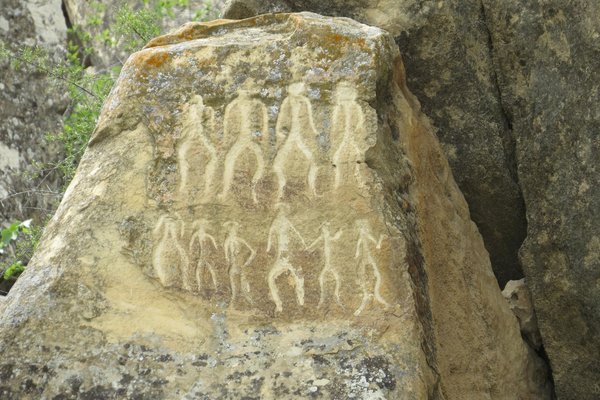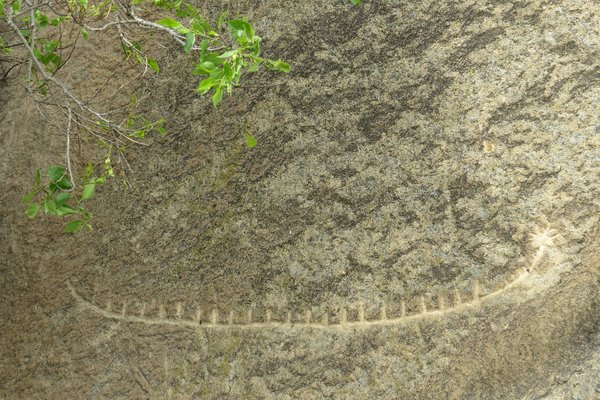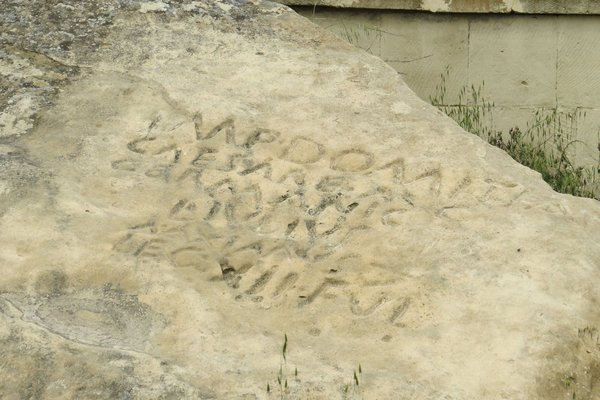Azerbaijan
Gobustan Rock Art
Gobustan Rock Art Cultural Landscape has an outstanding collection of more than 6,000 rock engravings.
They can be found on three flat-topped hills within a volcanic landscape. The oldest engravings were made during a warmer and wetter period. Dating from Prehistory to the Middle Ages, they depict primitive men, animals, battle pieces, ritual dances, bullfights, boats with armed oarsmen, warriors with lances in their hands, camel caravans, and pictures of sun and stars.
Community Perspective: All international visitors seem to be steered towards the Boyukdash location. A visit here should also include the modern Gobustan Museum. Gobustan had a rocky path to inscription, adequately described by Solivagant.
Site Info
Official Information
- Full Name
- Gobustan Rock Art Cultural Landscape (ID: 1076)
- Country
- Azerbaijan
- Status
-
Inscribed 2007
Site history
History of Gobustan Rock Art
- 2007: Advisory Body overruled
- ICOMOS advised referral (Action Plan, reviewing boundaries core and buffer zone)
- 2007: Inscribed
- Inscribed
- 2004: Deferred
- To undertake a research and analysis programme for the site, in order to quantify its significance in the wider world context
- Type
- Cultural
- Criteria
- iii
Links
- UNESCO
- whc.unesco.org
- Official
-
- gobustan-rockart.az — Gobustan Rock Art
- Related
-
- azer.com — Early man in Azerbaijan
- azer.com — Gobustan theories of Thor Heyerdahl
- en.wikipedia.org — Wiki on Gobustan
All Links
UNESCO.org
- whc.unesco.org — whc.unesco.org/
Official Website
- gobustan-rockart.az — Gobustan Rock Art
Related Resources
- azer.com — Early man in Azerbaijan
- azer.com — Gobustan theories of Thor Heyerdahl
- en.wikipedia.org — Wiki on Gobustan
Community Information
- Community Category
- Archaeological site: Rock Art
- Cultural Landscape: Relict
Travel Information
Recent Connections
-
Historic climate change
"Criterion (iii): The rock engravings a…
-
In Video Games
Civilization VI (as a Natural Wonder) -
Thor Heyerdahl
Linking Gobustan's Boat Petroglyphs wit…
Connections of Gobustan Rock Art
- Individual People
-
-
Thor Heyerdahl
Linking Gobustan's Boat Petroglyphs with the spread of Azeri civiliation to northern EuropeSee www.azer.com
-
- Geography
- Trivia
-
-
On Banknotes
Petroglyphs from Gobustan are depicted on the reverse of the Azerbaijani 5 manat banknote issued since 2006.See en.wikipedia.org
-
In Video Games
Civilization VI (as a Natural Wonder)
-
- History
-
-
Palaeolithic and Mesolithic
Images span from the Paleolithic to the modern period. (AB ev) -
Bronze Age
The area also holds Bronze Age burial sites (AB ev) -
Historic climate change
"Criterion (iii): The rock engravings are an exceptional testimony to a way of life that has disappeared in the way they represent so graphically activities connected with hunting and fishing at a time when the climate and vegetation of the area were warmer and wetter than today." (OUV)
-
- Architecture
-
-
Cave dwellings
The site also features the remains of inhabited caves, settlements and burials, all reflecting an intensive human use (AB ev)
-
- World Heritage Process
-
-
Inscribed on a single criterion only
iii. to bear a unique or at least exceptional testimony to a cultural tradition or to a civilization which is living or which has disappeared
-
- Human Activity
- Timeline
-
-
Late Pleistocene
The c6000 petroglyphs across 4 locations date from c 30000ybp to the Middle Ages. Little information is provided about numbers for each period. The Nom File identifies 4 stylistic groups across the High Pleistocene and Early Holocene (to c9k ybp), followed by examples for Neolithic, Eneolithic, Bronze, Iron and later. The OUV is based on Crit iii ...The engravings ... represent so graphically activities connected with hunting and fishing at a time when the climate and vegetation of the area were warmer and wetter than today.... As such, the earliest periods seem to be of the greater importance .. when the Caspian was much higher and, indeed, connected with the Black Sea
-
- Science and Technology
-
-
Archaeoacoustics
the rock was used to create "stone tambourines" ("Gaval Dash")See www.youtube.com
-
News
No news.
Recent Visitors
Visitors of Gobustan Rock Art
- AC
- Adrian Turtschi
- Afshin Iranpour
- Alexander Barabanov
- Alexander Lehmann
- Ali Zingstra
- A. Mehmet Haksever
- Ammon Watkins
- Ana Lozano
- Andrew0181
- Artur Anuszewski
- Aspasia
- Atila Ege
- Bill Maurmann
- Bin
- Boj
- Bram de Bruin
- Cheryl
- chiuliqi
- Christer Sundberg
- Christian Wagner
- christof
- Christoph
- Cirene Moraes
- Clyde
- CugelVance
- David Marton
- Dimitar Krastev
- Dorejd
- DutchHorn
- Els Slots
- Emili Xaus
- Eric Lurio
- Erik Jelinek
- Eva Kisgyorgy
- Evgenii
- Fan Yibo
- Feldhase
- Fmaiolo@yahoo.com
- Garrett
- George Gdanski
- Gilles
- Hadrianus
- Harald T.
- Harry Mitsidis
- henryjiao18
- Iain Jackson
- Ivan Rucek
- Jakubmarin
- Jarek Pokrzywnicki
- Jesse S 2010
- JobStopar
- Jonas Kremer
- Jon Opol
- JoshHad
- Juha Sjoeblom
- jxrocky
- KarenBMoore
- Ken DJ
- KentishTownRocks
- Knut
- Krijn
- krtek
- Kurt Lauer
- Lado Joel
- LaVale
- Loic Pedras
- Ludvan
- Luis Filipe Gaspar
- Luke LOU
- Maciej Gil
- Malgorzata Kopczynska
- marcel staron
- Mariam
- Martina Rúčková
- MatusBeber
- MH
- Michael Turtle
- Milan Jirasek
- MMM
- Nihal Ege
- Pchxiao
- Peter Lööv
- Philipp Leu
- Pieter Dijkshoorn
- Piotr Wasil
- Reza
- Rodinia
- Roger Enarsson
- Roger Ourset
- Roman Bruehwiler
- Rudegirl
- Solivagant
- Stanislaw Warwas
- Sutul
- Szabolcs Mosonyi
- Szucs Tamas
- Tamara Ratz
- Tarquinio_Superbo
- Tatiana Nikulnikova
- tedchang
- Thomas Buechler
- Thomas van der Walt
- Timothy C Easton
- tingmelvin
- Vanessa Buechler
- Velvetlapis
- voyager
- Walter
- Weecheng
- Wojciech Fedoruk
- Xiquinho Silva
- Yevhen Ivanovych
- Zoë Sheng
Community Reviews
Show full reviews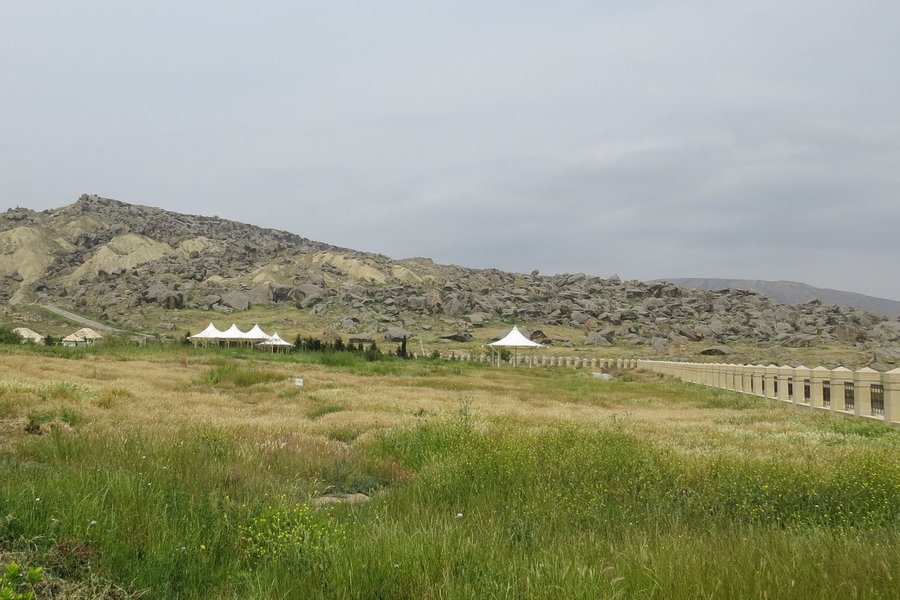
In October 2023, I had my first (and probably) only visit to this country and I took full advantage by visiting two UNESCO sites during my stay. I managed to keep the last day of my week free of meetings as I really wanted to go see life mud volcanoes. So, on Friday we took a full day field trip to check out all the sites in the country. The mud volcanoes are very close to the Gobustan UNESCO site and most people probably come on this trip to see them first. To me the mud volcanoes were the more impressive site which should probably be on the geologic list of places to see around the world. The Gobustan site was pretty impressive as well. The rock paintings that they have found here are from Neolithic age and show people have been living in this part of the world for a long time. There was a good part of the exhibition that shows the linkages between this site and other similar sites that I have visited like the one in France and the ones in Norway. Afterwards whole generations have lived and visited here including the Romans. The site and museum are very nicely done and organized with well markings and a good overview talking about the religions, geology etc.
This site is on par with the other Neolithic sites around the world and maybe even has more paintings over a wider area than some of the others. However, …
Keep reading 0 comments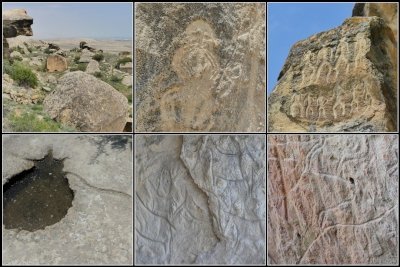
I visited this WHS in 2023. After a quick visit of the few original remains at the small visitor centre a few metres away, geared mainly to entertain the the many school groups visiting this site, I made an extra effort to also "see" the Roman inscription at the very edge before the restricted area. The Latin inscription needs cleaning as it is almost impossible to see now due to lichens and weathering. At least I got to see plenty of pygmy owls and the marble UNESCO WHS plaque in the area so it wasn't a complete waste of time. Next, I headed towards Boyukdash, the main component open to the general public in a sort of loop trail.
I must confess I had low expectations, as with many rock art sites, you never know what to expect until you get there. The rock art here covers a huge historical period from the Mesolithic to the Late Middle Ages. Overall, I was pleasantly surprised, mostly due to the quantity, quality and variety of the rock art. The rock art here truly sheds light on the lifestyle, occupation, religious beliefs and early art of the people who settled the area thousands of years ago. In an area of 3,096 hectares, archaeologists discovered more than 6,000 rock drawings, settlements, burial mounds, formerly inhabited caves, megalithic structures, traces of settlements and tombs.
Humans who settled in Gobustan more than 20,000 years ago are believed to have lived in a communal clan …
Keep reading 0 comments
Despite most of the people that took a tour to the site, I did it the local way by public bus from Baku. It's really recommended to go to the museum first to have a better understanding of the site archaeological findings and visualize what it was in the past.
It's a bit of walking uphill if you don't have a transportation, but the view along the way is rewarding. Especially you can see the village and the Caspian Sea on a sunny day.
There are a lot of carvings along the path, some of them occurring a big area while some you might just missed if you don't look clearly. They are all sided by numbers so you can basically follow so you won't miss it. The carvings are in good condition with most of the symbols of human and animals.
Some of the carvings are high up on the walls, sometimes wondering how they managed to get up at that level with limited tools available at that time. Some of the carvings are interesting too. Let your imagination flies and try to think in the Paleolithic mindset what the carvings are meant for.
The rock art can be combined with the mud volcano trip which is not far away. These two are considered extraordinary visit sites in the region. Definitely worth the visit.
Keep reading 0 comments
What would an international trip be without a visit to a fine example of rock art? Azerbaijan is represented among the at least 60 rock art-related WHS with the Gobustan Rock Art Cultural Landscape. Gobustan is the name of a region near the Caspian Sea, where, in the 1930s, the first discovery was made by local miners looking for gravel. The petroglyphs were carved into blocks of stone that had fallen from the cliffs above, blocks that provided a natural shelter for those living in the area.
The site now lies a couple of kilometers inland, but when the rock art was made, the water level was much higher and these rocks were near the seashore. It’s a quite barren area nowadays, from which you can see the offshore oilfields that keep Azerbaijan’s economy afloat. Next to the entrance of the sizeable archaeological area lies the modern Gobustan Museum. Other reviewers have sung praise about this museum, which is a 2011 addition to the ‘visitor experience’. I can only second that: it has a comprehensive exhibition that relies heavily on audio-visuals and computer animations. Our enthusiastic Azeri guide loved showing the developmental history of the site by swiping forward and backward in time.
The WHS officially comprises 3 areas with rock art, surrounding 3 table mountains that can be seen from the entrance. We only went to see one of these, Boyukdash. It seems that all tourists are immediately directed there, I even doubt that the other two locations are …
Keep reading 0 comments
Just back from our trip to Azerbeidzjan and Georgia (end of sept.2012).The Rock Art in Gobustan National Park is widely spread over a huge area. Valcamonica and Tanum are more impressive, but the new museum is fantastic.
Keep reading 0 comments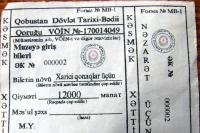
Gobustan was 1 of 3 “Rock Art” sites among the 22 added in 2007 (with Twyfelfontein and Lopé). There are already many such sites on the list (see my reviews of Valcamonica, Tanum, Alta and the Matabo Hills for just some of them!). Whether Gobustan adds a great deal is open to some debate. In 2004 ICOMOS had decided that the nomination should be deferred to allow development of a research program. The revised 2007 evaluation concluded that the site met but 1 of the proposed criteria (but that a case had not been adequately made on 2 others) and recommended further referral for reasons of management plan and boundary “inadequacies” - yet UNESCO accepted the site on all 3 criteria! If you are in Baku you should certainly take the c65 kms trip south to see it but we personally, as non-experts, wouldn’t rate the visit that highly in comparison with the other rupestrian sites we have seen, either for what is on show or for the conditions under which you are shown it.
One problem with visiting sights which are then inscribed some years later is that one hasn’t always taken a photo as confirmation of the visit! And, when we visited in August 2000, we certainly hadn’t regarded this site as future “World Heritage” material “requiring” such a snap (There was no easily available “T List” information then). But that isn’t the main reason why the only “confirmation photo” I can provide is of the ticket for …
Keep reading 0 comments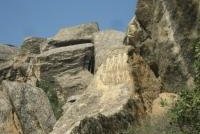
An early start and a roadside breakfast together with some locals Azeri’s who’ve probably never met a Scandinavian traveler before, was the start of my visit to Gobustan. After some 2-3 hours drive, south of Baku the first stop was at the burping and oozing mud volcanoes. The volcanoes are found on a small hill not far from the Gobustan petroglyphs and are an absolute must if you can find your way on the bumpy roads without non-what-so-ever signs to direct you to the right place. A local guide is therefore an absolute must.
On the road leading to the Gobustan visitor’s center and the rock carving site, there is another point of interest to be found – the “Roman graffiti”. A group of Roman soldiers, probably on a recognizance tour carved out a message stating the most Eastern point any Roman patrol ever ventured to.
Over 6000 rock carvings have been found in Gobustan and bears witness of a 12000 year old civilization that once lived by the Caspian Sea shore. Today the sea is found some 7-8 km in the eastern direction but it is still a fascinating landscape with large rocks that once functioned as roofs to the early settlements. The carvings usually depict humans, domestic and wild animals, boats and battle scenes.
During my World Heritage travels I’ve now seen rock carvings in Sweden, Norway, India and Azerbaijan and it’s interesting to find that there are similarities between them all. But to go as far as …
Keep reading 0 comments
